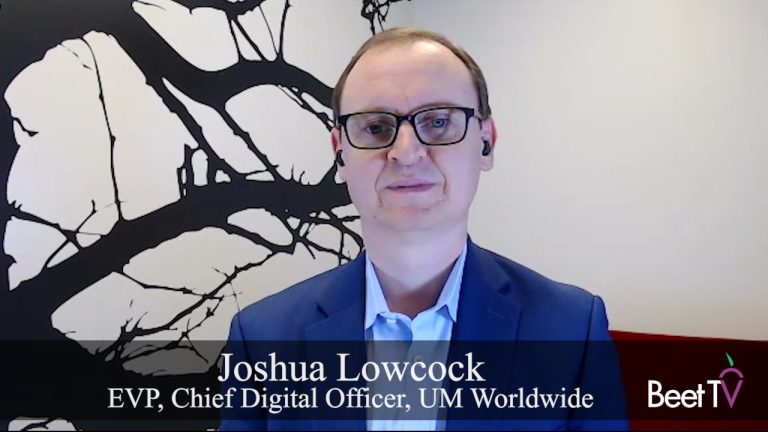
With software makers clamping down on use of device identifiers for advertising purposes, it seems like the fabric of digital advertising is being torn up, leaving ad agencies scrabbling to cook up alternative routes to audiences.
For one agency digital chief, what comes after identity comprises three approaches:
- An “agnostic” approach to alternative solutions.
- Embracing content-based targeting.
- Discovering the new science of “yield optimization”.
The new agnostics
In this video interview with Beet.TV, Joshua Lowcock, EVP and chief digital officer at UM Worldwide, maps out the future after cookies and mobile identifiers.
“For the foreseeable future, solutions will be fragmented,” he says.
“So, while you have LiveRamp, Verizon/Yahoo, The Trade Desk and others proposing solutions, there’s not a panacea out there; there’s not one ultimate solution that’s set to win.
“So you need to be agnostic. You need to be able to be comfortable to work across fragmented solutions and recognise that the best way forward is embracing that uncertainty.”
Publishers could be winners
If targeting people is becoming more difficult, targeting ads against the content they consume is coming back into fashion – but, cast as “contextual” targeting, this is also getting pumped up by digital capabilities.
“Content plays an important role in that world because people will still consume content,” Lowcock says. “So being in places where the content is relevant to that audience or creating content that is relevant to that audience is very important.
“I think we’ll actually see a return to the days where advertisers and publishers work together to create even better and more compelling content and tell better stories for consumers, and that’s exciting.”
Better than that, though, Lowcock sees ecommerce and retail media networks as helping ad buyers rediscover identified users.
“If you’re doing a transactional relationship, so you’re going on to a retail website and buying products and services, you’re categorically going to be identifiable.,” he says.
Optimise yield
All of that might make for a confusing, patchwork ecosystem. So Lowcock is optimistic about a new-wave software process called “yield optimization” that has been gathering pace but which still confuses some in the industry.
Lowcock explains how it works: “Yield optimization’s important because it’s all about driving performance in the best and most efficient outcome.
“It’s about ensuring that you’re finding and identifying audiences in the most efficient way possible to drive the most optimal yield
“It’s using first-party data where it’s available. It’s partnering with the right people that have first party data or seeking out smart, contextual, or other solutions as an alternative in backup.”